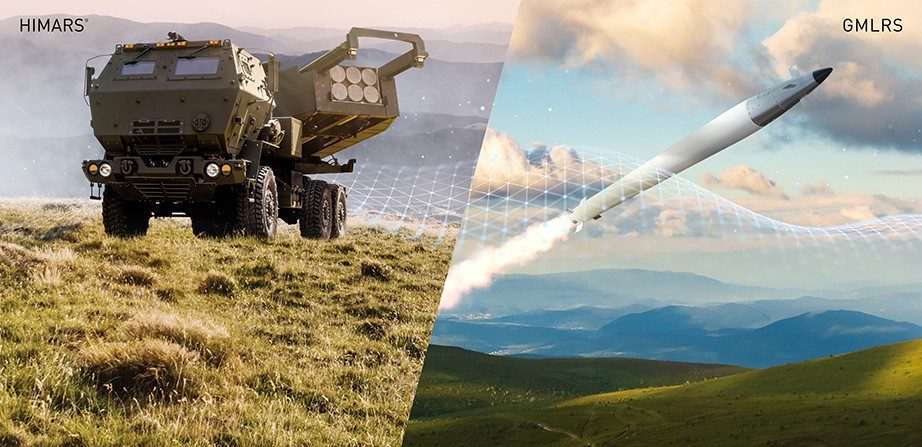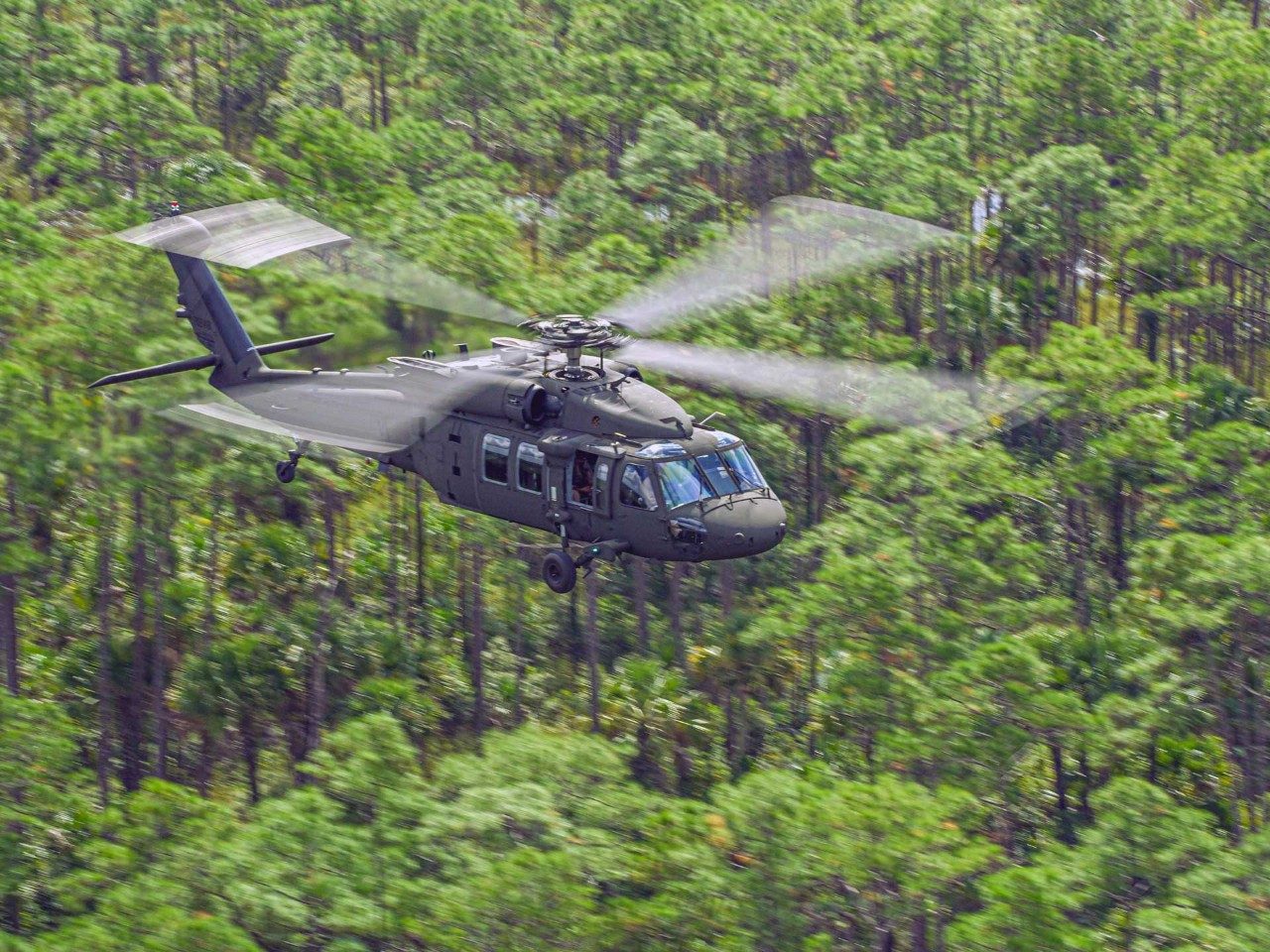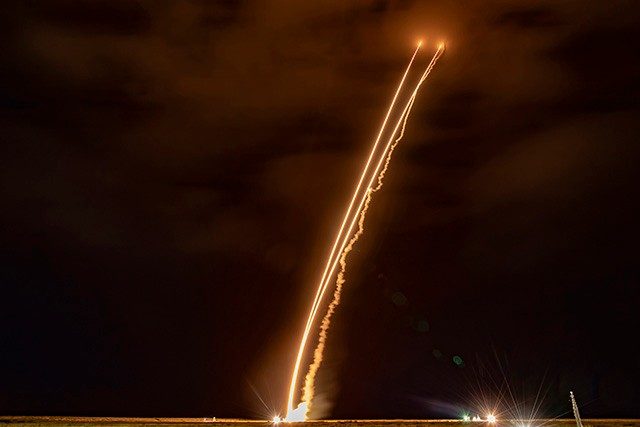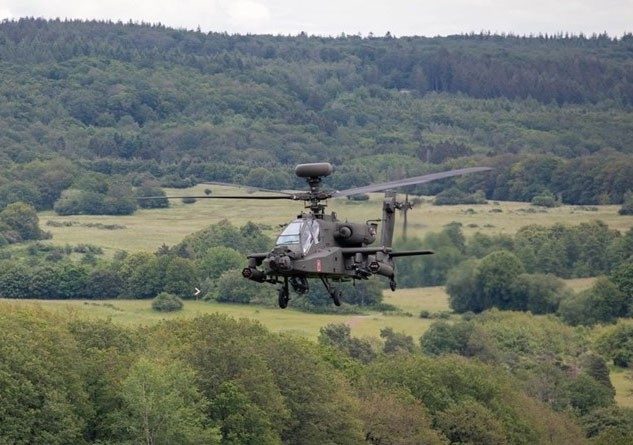Mission Integration: Shaping the Future of Defense Tech
With the rapid acceleration of AI, drones and cyber threats, today's missions are fast-moving and complex. Lockheed Martin's 21st Century Security® strategy connects systems and drives innovation with the mission in mind, ensuring new defense tech developments are purpose-built to deliver the right outcomes.
We call this approach mission integration. It speeds up outcomes and delivers quick decisions for real-world needs.
Lockheed Martin is rising to the challenge of mission integration. Working shoulder-to-shoulder with forces worldwide and experts across the industry, we’re transforming how defense tech is developed and delivered. Here’s how we’re doing it.
Mission: Experiment with New Technology in Contested Environments
The Extended-Range variant, ER GMLRS, has entered production to double the range of the current rocket from 70km to 150km, offering enhanced flexibility.
Lockheed Martin is also working to advance the U.S. Army’s Joint Integrated Fires vision, which enables offensive and defensive systems in contested environments. Recent testing events--including Valiant Shield 2024 and a captive carry test--have demonstrated the integration of existing technologies to enable rapid, data-driven decisions across operational domains.

ER GMLRS shares commonality with legacy GMLRS, and is deployable by HIMARS and the MLRS M270 family of launchers.
Mission: Dominate the Air-Ground Littoral
The UH-60M Black Hawk helicopter’s versatility means the U.S. Army can make critical upgrades quickly and cost-effectively, delivering new capabilities for Soldiers sooner.
Lockheed Martin is supporting the Army’s modernization priorities by integrating GE Aerospace’s powerful new T901 Improved Turbine Engine and by investing to help jump-start development and integration efforts such as the proven, verified Modular Open System Approach (MOSA), our MATRIX autonomy system, Launched Effects and more. Integration of our Pilotage Distributed Aperture System (PDAS) will provide multifunctional capabilities, including universal threat detection, GPS-denied navigation and increased situational awareness in Degraded Visual Environments for all crewmembers. With MOSA as its core design attribute, PDAS will ensure detection against ever-increasing emerging threats as The Future of Aircraft Survivability™.
Technology moves fast, and the Army needs affordable ways to keep legacy aircraft up to date with the latest innovations. Sikorsky, a Lockheed Martin Company, has developed an initial version of a digital backbone kit for the UH-60M, one that would deliver many of the benefits of MOSA without the cost of a major overhaul of the helicopter's architecture. Known as the Scalable Digital Backbone, this kit can digitize the aircraft quickly and efficiently, significantly reducing the cost and timeline for future upgrades.
In areas like the Indo-Pacific, with far-flung islands and varying terrain, Division commanders will rely on the Black Hawk helicopter to move Soldiers and supplies quickly and safely across long distances.
The UH-60M’s new Improved Turbine Engine (ITE) will give the Division commander more options for planning and executing air assault missions. It will deliver more power and better fuel efficiency, so the aircraft can fly further and carry more payload on a single gas tank.
These efforts will mature technology for use across the Army's future fleet, resulting in a more powerful, digital and connected Black Hawk helicopter that will give ground commanders a decisive advantage in the future fight.

The UH-60M Black Hawk remains the world’s most versatile utility helicopter.
Mission: Never Lose Sight of Threats
Lockheed Martin engineers are transforming the combat-proven Sniper® targeting pod — a staple on 4th Generation aircraft worldwide — into an edge communications and computing node to enable combined joint all-domain command and control. The team is working on enhancing Sniper capabilities to allow missions in which F-35 5th Generation fighters and their advanced sensors would serve as forward observers that identify and track targets. The F-35 could then share precise coordinates with F-16s and ground-based Command and Control Systems, that allow the employment of MLRS family of munitions from either HIMARS or M270.
Two technical enhancements in the new Sniper Networked Targeting Pod will ensure 4th Generation aircraft are in sync. An advanced datalink will enable the sharing of target and surveillance information. A Mobile Ad-hoc Network (MANET) radio will support a decentralized mesh network of multiple air, ground and sea platforms, all ready to share and act on that information. 5G.MIL® Unified Network Solutions will ensure the data remains highly secure and available to the right user at the right time.
Lockheed Martin Apache Fire Control sensors continue to provide unmatched targeting and pilotage capabilities for Apache aircrews. These sensor systems, now called the Gen 3 Target Acquisition Designation Sights/Pilot Night Vision System, include the latest sensor upgrades resident on AH-64E Version 6 Apache attack helicopters. The Gen 3 Day Sensor Assembly, extended LONGBOW® Fire Control Radar and Gen 2 Radar Frequency Interferometer (RFI) enable Apache aircrews to detect and destroy threats during day, night and in adverse weather conditions. By enhancing the ability to detect, track and engage targets in the most challenging environments at extended ranges, Lockheed Martin Apache Fire Control's continuous modernization initiatives will enable the U.S. Army to transform in contact and add the Apache’s ability to dominate in the Air-Ground Littoral.

Enhancements to Lockheed Martin’s combat-proven Sniper® targeting pod will deliver unprecedented interoperability.
Mission: Protect Friendly Forces from Advanced Air and Missile Threats
The Terminal High Altitude Area Defense (THAAD) Weapon System successfully integrated and launched a PAC-3 MSE to intercept a tactical ballistic missile target using proven Hit-to-Kill technology in 2022. With this successful demonstration, the THAAD Weapon System can now be deployed anywhere with minimal Patriot equipment required and limited to PAC-3 MSE M903 launchers and PAC-3 MSE interceptors.
This integration further exemplifies Lockheed Martin’s commitment to building a layered and networked missile defense system that enables joint all-domain operations. The result: expanded 21st Century Security solutions that give the warfighter more options with existing equipment, allowing them to choose the best interceptor for any threat they face.

The THAAD Weapon System is used to fire two PAC-3 MSEs to intercept a live target.
Mission: Customize Electronic Warfare Packages for Spectrum Superiority
Lockheed Martin is combining electromagnetic spectrum technology with microelectronics to develop custom electronic warfare (EW) packages, which are designed to address specific mission needs. This new technology provides capability enhancements in a smaller, lighter package to size, weight and power (SWaP) constrained airborne platforms.
As part of Army modernization efforts, Lockheed Martin has been selected to develop the Gen 3 Radar Frequency Interferometer / Radar Warning Receiver APR-48B system for the U.S. Army’s Apache helicopter fleet. This is the first time that a radio frequency system on a chip is being used in the APR-48B electronic warfare system.

A U.S. Army AH-64E Apache Guardian helicopter in Rheinland-Pfalz, Baumholder, Germany.
Lockheed Martin is positioned to make these connections because of our expertise in 21st Century Security and experience developing advanced technologies across every domain.




